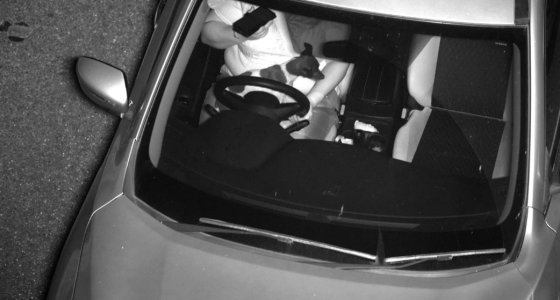Eighty drivers face license loss and heavy fines over mobile phone use
By
- Replies 37
In an era when smartphones seem to be an extension of our hands, it's no surprise that the temptation to glance at our screens can strike at any time.
However, when that moment comes while we're behind the wheel, the consequences can be dire—not just for our safety but for our right to drive.
In South Australia, a new crackdown on mobile phone use while driving has seen many drivers caught in the act, with some facing severe repercussions.
Despite the introduction of mobile phone detection cameras and a concerted effort by police to educate the public, a staggering 80 motorists have been detected using their devices while driving 'four or more times' in just one month.
On the one hand, the overall rate of expiation notices for mobile phone use while driving has decreased from 0.42 per cent to 0.23 per cent since the cameras were turned on permanently after a three-month warning period.
This suggests that the hefty penalties—including a $556 fine plus a $102 Victims of Crime Levy and three demerit points—impact driver behaviour.
Superintendent Darren Fielke expressed cautious optimism, noting that 'most habitual mobile phone offenders have finally put their phones down or have been taken off the road after too many demerit point deductions.'
This is a positive step towards safer roads and a testament to the effectiveness of the new technology and enforcement strategies.
However, the bad news is that drivers are still repeatedly ignoring the law.
The numbers are sobering: One driver is set to receive 15 expiation notices, while others face 11, 10, and even nine notices.
These individuals face hefty financial penalties and risk losing their licenses due to accumulating demerit points.
Superintendent Fielke's words are a stark reminder of the stakes involved: 'These drivers will pay a high price financially and lose their licence.
We can only hope that is all that is lost, and it is not a life lost due to their irresponsible behaviour.'
The mobile phone detection cameras, currently installed across five high-risk locations monitoring 13 lanes, are part of a broader initiative to curb dangerous driving habits.
With warning signs in place and more camera locations being considered for early 2025, the message is clear: it's time to disconnect from our phones when driving.
During the three-month grace period, 68,252 warning letters were sent out for phone offences.
Had fines been issued during this period, it would have amounted to a staggering $45 million in three months.
With the grace period over, authorities are expected to collect millions in fines by the end of the year.
The state's Police Commissioner Grant Stevens didn't mince words when addressing the behaviour of repeat offenders, calling it 'disgraceful.'
 Have you noticed a change in driver behaviour since these cameras were introduced? Do you think the penalties are sufficient to deter repeat offenders? Let us know in the comments below.
Have you noticed a change in driver behaviour since these cameras were introduced? Do you think the penalties are sufficient to deter repeat offenders? Let us know in the comments below.
However, when that moment comes while we're behind the wheel, the consequences can be dire—not just for our safety but for our right to drive.
In South Australia, a new crackdown on mobile phone use while driving has seen many drivers caught in the act, with some facing severe repercussions.
Despite the introduction of mobile phone detection cameras and a concerted effort by police to educate the public, a staggering 80 motorists have been detected using their devices while driving 'four or more times' in just one month.
On the one hand, the overall rate of expiation notices for mobile phone use while driving has decreased from 0.42 per cent to 0.23 per cent since the cameras were turned on permanently after a three-month warning period.
This suggests that the hefty penalties—including a $556 fine plus a $102 Victims of Crime Levy and three demerit points—impact driver behaviour.
Superintendent Darren Fielke expressed cautious optimism, noting that 'most habitual mobile phone offenders have finally put their phones down or have been taken off the road after too many demerit point deductions.'
This is a positive step towards safer roads and a testament to the effectiveness of the new technology and enforcement strategies.
However, the bad news is that drivers are still repeatedly ignoring the law.
The numbers are sobering: One driver is set to receive 15 expiation notices, while others face 11, 10, and even nine notices.
These individuals face hefty financial penalties and risk losing their licenses due to accumulating demerit points.
Superintendent Fielke's words are a stark reminder of the stakes involved: 'These drivers will pay a high price financially and lose their licence.
We can only hope that is all that is lost, and it is not a life lost due to their irresponsible behaviour.'
The mobile phone detection cameras, currently installed across five high-risk locations monitoring 13 lanes, are part of a broader initiative to curb dangerous driving habits.
With warning signs in place and more camera locations being considered for early 2025, the message is clear: it's time to disconnect from our phones when driving.
During the three-month grace period, 68,252 warning letters were sent out for phone offences.
Had fines been issued during this period, it would have amounted to a staggering $45 million in three months.
With the grace period over, authorities are expected to collect millions in fines by the end of the year.
The state's Police Commissioner Grant Stevens didn't mince words when addressing the behaviour of repeat offenders, calling it 'disgraceful.'
Key Takeaways
- South Australian Police are reporting a decrease in drivers using mobile phones since the introduction of new detection cameras.
- Despite the overall improvement, there are still significant numbers of repeat offenders, with 80 motorists detected multiple times in just one month.
- Heavy fines and demerit points have been introduced to deter the dangerous behaviour of using phones while driving.
- Mobile phone detection cameras have been permanently installed at high-risk locations, with signs warning drivers of their presence.








